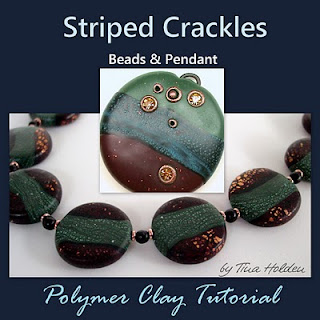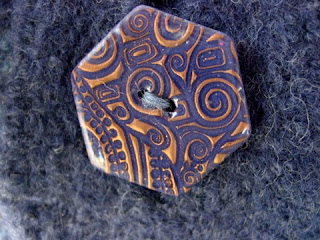Fall has arrived and with it, shorter days, less sun and cooler temperatures. If you've been following my blog on Polymer Clay Bytes!, then you know I've been posting quite a bit about resin. I've been bemoaning my two nail art lamps that have been doing double duty and there have been many times with me running outside to quickly lay out a tray of pieces only for the sun to go into hiding.
The nail art lamps are quite reliable for Magic glos, but since I have a quart of industrial resin that I also like to use, unfortunately it also requires more lumen or output of light than the lamps could handle.
So check out this cool suntan bed my hubby built for me. I'm so stoked! It's fitted with 2 ballasts that hold 15 inch long
BL 350 tubes . The plastic covers were removed and anchored inside an aluminum foil lined box. The aluminum helps reflect as much light as possible. The interior of the box can easily handle 40 pendants on its 9 x 18 inch area. I have two glass shelves that can be lowered and raised via 2 blocks for items with varying heights. Ideally, the resin cures best about 2 or 3 inches from the lights. There is a hinged door to close the unit as it's in close proximity to where I'm working. For these type of bulbs protective eyewear is recommended. I'll be sun tanning my clay a lot more now!
About my other lamps, the single bulb 9 Watt lamp has only a 2 x 6 inch area and the larger with four 9Watt bulbs has a 6 x 6 inch working area. Those lamps cost on average $35 for the small and $60 for the large, but sometimes Ebay has great deals. I guess I'll put mine into storage or find a hobby crafter who can use one or the other.
There is a lot more to UV these days than suntans and light bulbs. UV can cause chemical reactions, cause many substances to glow or flouresce such as when checking for biological hazards in public places or to detect counterfeit currency would be a couple of examples.
UV wands for your purse are now available to kill bacteria if you are sensitive to chemical sanitizers and sprays. We all know the effects of UV by way of sunburns, but the UV spectrum has many other effects, both beneficial and damaging, to human health. You can read a lot more on
Wikipedia about UV and Black Light and differences.
Anyway, a big thanks to my friend Gera Scott Chandler who first blogged about her home built UV lamp that reminds her off a Lunar Excursion Module and well, I kind of thought so as well, lol. Well, it IS complete with Space blanket! You can see Gera's innovative
LEM lamp and
an update is found here. In general, her blog is well worth the visit.
































